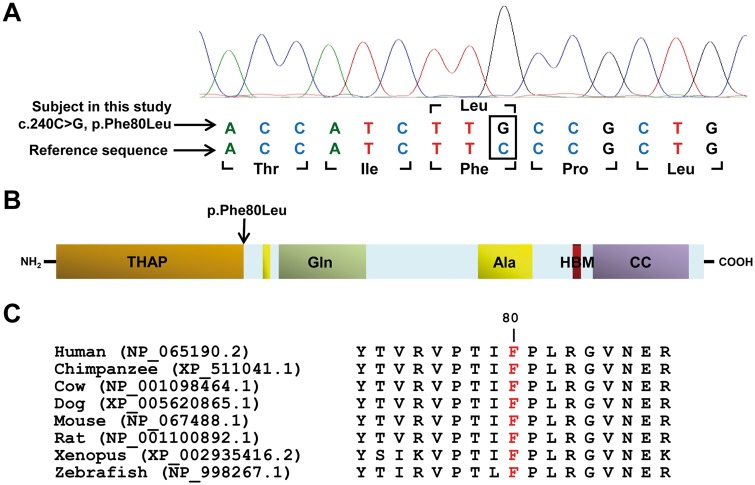Figure 1.
THAP11 mutation in an individual with a cblX-like disorder. (A) Chromatograph of Sanger sequencing shows a novel homozygous c.240C>G (p.Phe80Leu) missense mutation in the subject. (B) Protein domains of THAP11 identified using UniProt include THAP-type zinc-finger DNA-binding domain (THAP), Glutamine-rich domain (Gln) domain, Alanine-rich domain (Ala), HCFC1 binding motif (HBM), and a coiled-coil domain (CC). (C) Evolutionary conservation of Phe80 (highlighted in red) in THAP11 demonstrated using comparative analysis of orthologs from multiple species. Orthologs were identified by using BLASTP, and the alignments were performed by using ClustalW. Protein accession numbers are in parentheses.

